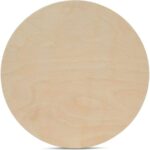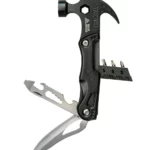I. The Rise of Second-Hand Synths: A Vintage Music Trend
II. Transforming Old Keyboards: Creative Upcycling Techniques
III. Building Your Own Music Station: Essential Tips and Tools
The Rise of Second-Hand Synths: A Vintage Music Trend
Hey there, fellow music lovers! Have you noticed the buzz surrounding second-hand synthesizers? It seems like everywhere you turn, musicians are reaching for those vintage gems, and for good reason. Let’s dive into this exciting trend and explore why second-hand synths are taking the music world by storm.
The Allure of Vintage Sounds
First off, there’s something undeniably special about vintage synths. Each instrument has its own character, a little bit of history, and a sound that you just can’t replicate with modern gear. These synthesizers were often built during a time when manufacturers were experimenting with new technologies, resulting in unique tones that have become staples in music production. Whether it’s the warm, rich sounds of an old Moog or the quirky timbres of a vintage Roland, these instruments offer a sonic palette that today’s plug-ins can struggle to match.
Affordability Meets Authenticity
Another significant reason why musicians are flocking to second-hand synths is the affordability factor. Let’s face it; brand new gear can get pricey, especially if you’re eyeing a high-end synthesizer. By opting for second-hand options, you can snag quality instruments without breaking the bank. Plus, when you buy used, you’re often purchasing something that has already been broken in, resulting in a smoother playing experience right out of the box!
- Check Local Listings: Websites like Craigslist or Facebook Marketplace can be treasure troves for finding local second-hand synths.
- Visit Music Shops: Don’t forget to check out your local music stores. Many sell used gear, and sometimes you can even haggle!
- Online Marketplaces: eBay and Reverb are great platforms to find a wide range of vintage synths, often with buyer protections in place.
The Community Connection
There’s something truly special about the community that surrounds vintage synthesizers. Musicians often bond over their love for these instruments, sharing tips, tricks, and even stories about their finds. Social media groups and forums dedicated to synthesizers can be a wealth of information. Here, you can find advice on maintenance, modifications, and even how to identify the best models to buy. It’s a great way to connect with like-minded individuals who share your passion.
Moreover, many musicians are embracing the DIY aspect of second-hand synths. Repairing and restoring these vintage instruments has become a fun project for many. Whether you’re a seasoned technician or a curious beginner, restoring a synth can be a rewarding experience that deepens your relationship with your music-making gear.
Final Thoughts
In conclusion, the rise of second-hand synthesizers is not just a passing trend; it’s a movement steeped in nostalgia, creativity, and community. By exploring the world of vintage synths, you not only gain access to unique sounds but also become part of a vibrant culture that values authenticity and artistry. So, dive into the world of second-hand synths, and you might just discover the perfect instrument that speaks to your creative soul!
Transforming Old Keyboards: Creative Upcycling Techniques
If you’ve stumbled upon an old keyboard, whether it’s a dusty relic from the ’80s or a slightly battered model from the early 2000s, don’t toss it aside just yet! These vintage instruments are bursting with potential and can be transformed into something truly special. Let’s dive into some creative upcycling techniques that can breathe new life into old keyboards.
1. Aesthetic Makeover
First things first: the look of your keyboard. A simple aesthetic makeover can completely change its vibe. Here are some fun ideas:
- Custom Paint Job: Grab some spray paint or acrylics and get creative! You can go for a classic matte finish or a vibrant, funky design. Just make sure you remove any hardware that could get painted over, like switches and keys.
- Decals and Stickers: If painting isn’t your thing, consider using vinyl decals or stickers. These can add a personal touch without the commitment of paint.
- LED Backlighting: For a modern twist, consider adding LED lights underneath the keys. This not only looks great but can also help you see the keys better in low light.
2. Functional Upgrades
Once your keyboard looks the part, why not enhance its functionality too? Here are some upgrades you can consider:
- New Sounds: With advancements in technology, many old keyboards can benefit from new sound libraries. Look for MIDI-compatible software that can breathe new life into those old sounds.
- Rewiring for Connectivity: If your keyboard is stuck in the past with outdated connections, consider rewiring it for USB compatibility. This can make it much more useful in modern setups.
- Adding Extra Features: You could also add new features like drum pads or additional knobs. This can turn your keyboard into a more versatile instrument, perfect for layering sounds.
3. DIY Accessories
Don’t forget about accessories! Crafting your own additions can enhance both the look and the usability of your keyboard:
- Custom Stand: Use wood or even repurposed furniture to create a unique stand that matches your keyboard’s new aesthetic.
- Pedals and Controls: If you’re feeling adventurous, you can build your own foot pedals or additional control mechanisms for a more hands-on approach to playing.
- Soundproofing: If you’re using your keyboard for recording, consider DIY soundproofing solutions, like creating a dedicated music corner with some homemade acoustic panels!
4. Share Your Creation
Finally, once you’ve completed your upcycling project, don’t forget to share it with the world! Post pictures on social media or join online communities where fellow enthusiasts can admire your handiwork. You might even inspire someone else to embark on their own keyboard transformation journey!
So, the next time you encounter an old keyboard, remember that its potential doesn’t have to end with the past. With some creativity and a little elbow grease, you can transform it into a unique piece of musical history that suits your style and sound. Happy upcycling!
Building Your Own Music Station: Essential Tips and Tools
So, you’ve decided to embark on the exciting journey of building your own music station! Whether you’re a budding musician or a seasoned producer, having a dedicated space for your creative endeavors can make all the difference. Let’s break down some essential tips and tools you’ll need to get started on this musical adventure.
1. Choosing the Right Space
The first step in creating your music station is selecting the perfect spot. Here are a few things to consider:
- Quiet Environment: Look for a place in your home that is relatively quiet and free from distractions. A basement or a spare room can often be ideal.
- Good Acoustics: If possible, choose a room with carpet or curtains to minimize echo. You can always add some acoustic treatment later on!
- Access to Power Outlets: Ensure your space has enough power outlets for all your gear. This is crucial to avoid any awkward setups!
2. Essential Gear for Your Music Station
Now that you have your space, let’s talk about the gear you’ll need to create an effective music station:
- Computer: A reliable computer is the heart of your music station. Whether you prefer a Mac or a PC, ensure it has enough RAM and a decent processor to handle your software.
- Digital Audio Workstation (DAW): Choose a DAW that suits your style, such as Ableton Live, Logic Pro, or FL Studio. Most offer free trials, so test a few before committing!
- Audio Interface: This is essential for connecting your instruments and microphones to your computer. A good interface will enhance your sound quality significantly.
- Headphones: Invest in a pair of quality studio headphones. They are crucial for mixing and monitoring your tracks with precision.
- Monitors: Proper studio monitors will help you hear your music accurately. This is key for mixing and mastering your tracks effectively.
3. Additional Tools to Consider
Once you have the basics down, consider adding some of these tools to enhance your setup:
- MIDI Controller: If you love playing melodies or beats, a MIDI controller can be a game-changer. It allows you to control your software more intuitively.
- Microphone: Whether you’re recording vocals or instruments, a good microphone is a must-have. Look for a condenser mic for studio-quality sound.
- Plugins and Virtual Instruments: Expand your sonic palette with various plugins and virtual instruments. Many free options are available, so don’t hesitate to explore!
4. Organizing Your Space
Lastly, organization is key to a productive music station. Here are some tips:
- Keep Cables Tidy: Use cable ties or clips to keep your cables organized and prevent tangling.
- Ergonomic Setup: Adjust your desk height and chair for comfort. Your back will thank you during those late-night sessions!
- Inspiration Board: Create a space for inspiration – pin up notes, lyrics, or images that motivate you.
Creating your own music station is not just about the tools; it’s about crafting a space where you can unleash your creativity. With the right setup and a little love, your music station can become your favorite place in the world. Happy music-making!









Comments